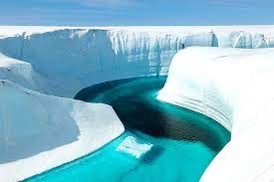
By Sarah KaplanMarch 15, 2021 at 3:56 p.m. EDTAdd to list
At first, Andrew Christ was ecstatic. In soil taken from the bottom of the Greenland ice sheet, he’d discovered the remains of ancient plants. Only one other team of researchers had ever found greenery beneath the mile-high ice mass.
But then Christ determined how long it had been since that soil had seen sunlight: Less than a million years. Just the blink of an eye in geologic terms.
And it dawned on him. If plants once grew at multiple spots on the surface of Greenland, that meant the ice that now covers the island had entirely melted. And if the whole Greenland ice sheet had melted once in the not-so-distant past, that meant it could go again.
“Oh my god,” he thought.
The findings, published Monday in the Proceedings of the National Academy of Sciences, indicate that the biggest reservoir of ice in the Northern Hemisphere can collapse due to relatively small increases in temperature over a long period of time. That makes it even more vulnerable to human-caused warming, which is causing the Earth to warm faster now than at any other period in its history.
“We know the Greenland ice sheet has this threshold,” Christ said — and humanity is pushing it.
The world has just over a decade to get climate change under control, U.N. scientists say
Greenhouse gas emissions from human activities have already raised global average temperatures more than 1 degree Celsius (1.8 degrees Fahrenheit) since 1880. Greenland is losing ice at its fastest rate since humans invented agriculture, causing about 14 millimeters of sea level rise in the past half-century.
If the island’s entire ice sheet were to melt now, global sea levels would rise by more than 20 feet.
Leave a Reply